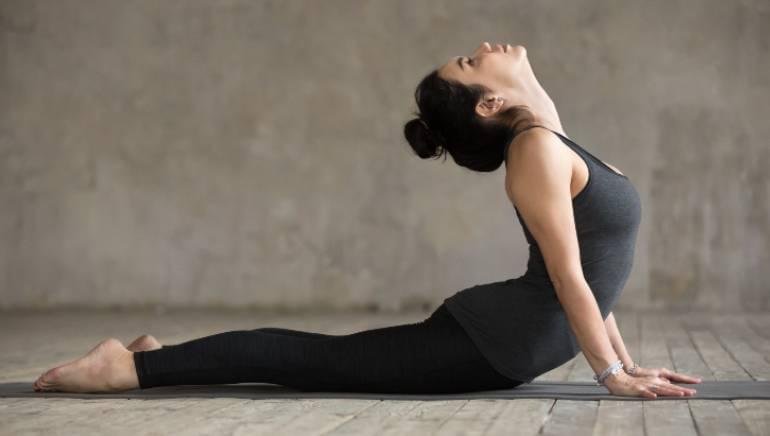If you have any pain, discomfort, or imbalances in your body, your sitting habits may be a contributing factor. Consider this. The average person sits for nine to fourteen hours per day.
All that sitting can result in tight hips, neck and shoulder tension, and, of course, back pain! With that nagging discomfort, you may find that your focus is frequently shifting away from your work, lowering your overall productivity. There appears to be an obvious solution: you should stop sitting so much, right? But what if you are unable to? Most of us are required to work in a seated position most of the time.
1. Be in a good position before you sit down.
It’s much easier to maintain good form from the beginning of a squat, just as it is to maintain good form at the bottom of a squat in the gym. Stand up straight before you sit down. Sit down and hip hinge (sit the hips back as if trying to touch the wall behind you with your butt) into a seat while keeping your back straight. As you can see, gym tactics can be applied in real-world scenarios.
Use the following suggestions to relieve pain in your body and increase your productivity at work.
2. Sit on the edge of your chair.
When you sit back in your chair, your hamstrings begin to bear the brunt of your weight. That is not what we want. Sitting on your “sit bones” will not only keep your hamstrings from getting stiff, but it will also keep your femur from moving into an undesirable position in the hip socket. To alleviate pain, move forward in your seat.
3. Sit on a hard surface.
Though sitting on something soft, such as a couch cushion, may feel nice and comfortable, it is a much less stable and sturdy surface. As a result, maintaining our position becomes more difficult.
The tailbone usually tucks under, resulting in a flexed lumbar position, which leads to more rounding of the back. A hard surface, on the other hand, provides the sturdiness we require to maintain our position.
As you can see in the photo below, I entered the seat with good form but immediately rounded my back when I placed all of my weight on the cushion.
4. The higher the seat, the better your posture.
The higher we sit, the closer we are to being able to stand. This means that the less hip flexion we have, the better. Less hip flexion results in less hip and quad tightness, resulting in less of a “Donald Duck butt” when standing. It’s a deadly chain reaction!
The difference in hip angle can be seen in the previous two photos. The deeper you sink into a seat, the more tension you’ll feel in your hips.
5. If you do sit back, use a lumbar support.
Use lumbar support when you don’t have a choice and have to sit all the way back, such as in a car or on an airplane when you’re belted in. The majority of chairs promote a flexed (rounded) lumbar spine. Roll up a towel and place it between the chair and your lower back to change your form.
Make the cushioning thick enough to replicate the natural lumbar curve. There are also products designed specifically for this purpose. A simple Google search for “lumbar support” will yield a plethora of results. You can also visit the Back Fit Pro website to find more supportive products to help with your posture. Some of the options here are a little more expensive than others, but they make some of the best products available, in my opinion.
6. Recline back.
This follows the same reasoning as sitting higher up. If we cannot sit on the edge of our seats, we may be able to recline. This position not only increases the angle between the thigh and the pelvis, but it also requires less effort to maintain good back posture. However, while in this position, make sure you’re not so far back that you have to reach your head and neck forward to do anything.
7. Change positions frequently.
It makes no difference whether we are sitting or standing; if we remain in the same position for an extended period of time, we will most likely develop back pain. Try to change your sitting position every 5, 10, or 20 minutes. Check out the photos below to see how you can change it up while remaining seated. Of course, some of these only apply to certain types of chairs, so find the positions that are most comfortable for you. And, while some may appear ridiculous, they are still an option.
8. Get up and move frequently.
Finally, even if you are doing everything correctly in your seat, you should keep your body moving. That doesn’t mean carrying a dumbbell around with you all the time to curl, but it does mean that if you work at a desk, take a two to five minute break every 30 to 60 minutes to stretch or walk around.
If your job requires you to be on your feet all the time, find a place to lay or sit down instead. You can find some good mobility flows to do during those breaks (I post plenty on the Healthy Movement Blueprint social media pages). Finally, I just want you to move, however you choose.
You Can Do It!
Stop thinking about how you won’t be able to complete half of these tasks! Do your best. Perhaps you can do the first two at your office job but not at your kitchen table. You might be able to do the next two in the kitchen, but not at work. Try to take advantage of as many as you can, wherever you can.
There is no better time to make changes if you are currently in pain. There is no better time to make changes if you are not in pain but live your life with poor posture.



